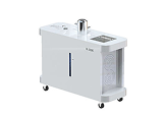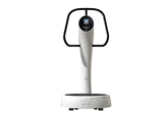Brain- Hydrogen: The Antioxidant That Saves Cells
Nature Medicine 2007 | Nippon Medical School
Hydrogen: The Antioxidant That Saves Cells
What Did They Discover?
Hydrogen selectively scavenges •OH (hydroxyl radicals), the most toxic ROS, while preserving other reactive oxygen species essential for cell signaling
How Does It Work?
In a rat cerebral infarction model, 2-4% H₂ gas inhalation reduced brain damage by 66% during reperfusion (more effective than existing treatments)
Why Does It Matter?
H₂ rapidly diffuses across membranes to reach mitochondria and nuclei, offering potential treatment for ischemia-reperfusion injuries like stroke and myocardial infarction
Key Data:
Brain Damage Reduction by H₂ Concentration
H₂ Concentration
Infarct Volume
Reduction
H₂ 0% (Control)
200 mm³
-
H₂ 1%
140 mm³
30% ↓
H₂ 2%
68 mm³
66% ↓ ✓
H₂ 4%
73 mm³
63% ↓
- Optimal concentration:
2-4% hydrogen gas | 90-min ischemia + 30-min reperfusion model
Conclusion
Hydrogen freely penetrates cell membranes and selectively eliminates toxic radicals, making it an ideal antioxidant. It represents a novel therapeutic strategy for acute oxidative stress diseases including stroke and organ transplantation.
Ohsawa et al., Nature Medicine (2007) Cited 1,924+ times | Landmark paper in hydrogen medicine
Photobiomodulation Treatment Device
Hyperbaric Oxygen Chamber
Hydrogen Inhalation Machine
Nano-bubble Hydrogen
Water Generator
Whole Body Wave
Motion Exercise Device
Nitro Biome
BAHI Longevity
Product Background
References
Customer Center
Get In Touch
- Haan-ro, Gwangmyeong-si, Gyeonggi-do, Republic of Korea
- +82)2-898-2116
- info@huelight.kr
Copyright 2025 © Hue Light Co., Ltd. All rights reserved.
Disclaimer: The medical papers and academic information provided on this site are intended for educational purposes only and are not meant to
diagnose, treat, prevent diseases, or substitute for a doctor’s advice.





